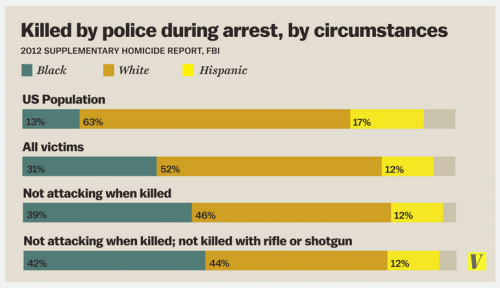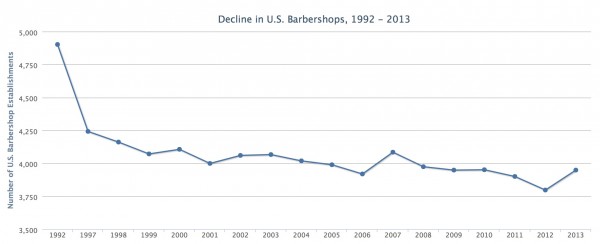FBI director, James Comey, didn’t call it the “Ferguson Effect.” Instead, he called the recent rise in homicide rates a “viral video effect” – a more accurately descriptive term for the same idea: that murder rates increased because the police were withdrawing from proactive policing. The full sequence goes something like this: Police kill unarmed Black person. Video goes viral. Groups like Black Lives Matter organize protests. Politicians fail to defend the police. Police decrease their presence in high-crime areas. More people in those areas commit murder.
Baltimore is a good example, as Peter Moskos has strongly argued on his blog Cop in the Hood. But many cities, even those with all the Ferguson elements, have not seen large increases in homicide. New York, for example, the city where I live, had all of the Ferguson-effect elements. Yet the number of murders in New York did not rise, nor did rates of other crimes. Other factors – gang conflict, drugs, and the availability of guns – make a big difference, and these vary among cities. Chicago is not New York. Las Vegas is not Houston. All homicide is local.
There is another flaw with the viral-video theory: It assumes that the crime is a game of cops and robbers (or cops and murderers), where the only important players are the bad guys and the cops. If the cops ease up, the bad guys start pulling the trigger more often. Or as Director Comey put it,
There’s a perception that police are less likely to do the marginal additional policing that suppresses crime — the getting out of your car at 2 in the morning and saying to a group of guys, “Hey, what are you doing here?”
This model of crime leaves out the other people in those high-crime neighborhoods. It sees them as spectators or bystanders or occasionally victims. But those people, the ones who are neither cops nor shooters, can play a crucial role in crime control. In some places, it is the residents of the neighborhood who can get the troublesome kids to move off the corner. But even when residents cannot exert any direct force on the bad guys, they can provide information or in other ways help the police. Or not.
This suggests a different kind of Ferguson Effect. In the standard version, the community vents its anger at the cops, the cops then withdraw, and crime goes up. But the arrows of cause and effect can point in both directions. Those viral videos of police killing unarmed Black people reduce the general level of trust. More important, those killings are often the unusually lethal tip of an iceberg of daily unpleasant interactions between police and civilians. That was certainly the case with the Ferguson police department with its massive use of traffic citations and other fines as a major source of revenue. Little wonder that a possibly justifiable shooting by a cop elicited a huge protest.
It’s not clear exactly how the Full Ferguson works. Criminologist Rich Rosenfeld speculates that where people don’t trust the police, they are more likely to settle scores themselves. That may be true, but I wonder if it accounts for increases in killings between gang members or drug dealers. They weren’t going to call the cops anyway. Nor were people who have been drinking and get into an argument, and someone has a gun.
But maybe where that trust is absent, people don’t do what most of us would do when there’s trouble we cannot handle ourselves – dial 911. As in Director Comey’s version, the police are less a presence in those neighborhoods but not because they are afraid of being prosecuted for being too aggressive and not because they are being petulant about what some politician said, but because people there are not calling the cops.
Originally posted at Montclair SocioBlog.
Jay Livingston is the chair of the Sociology Department at Montclair State University. You can follow him at Montclair SocioBlog or on Twitter.






